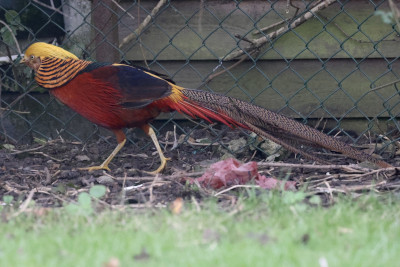 Past Events
Past Events
Walk 01 Jan 2024

It was with a sense of relief that we could greet the New Year birds without roaring wind or hammering rain! About 27 Friends met up in the car park for a circuit around Flat Beach led by James, who warned us that we’d not be allowed home for lunch until at least 50 species had been found.

Hardly out of the car park, we noticed a couple of bigger birds with Starlings in the tree-tops – Fieldfares. This winter thrush comes down in the evening to roost at Castle Water after a day spent foraging windfalls in hinterland orchards but is rarely seen around the village. A single Mistle Thrush also rattled over – no cheering song this time.

Very quickly we found a flock of Brent Geese close to the path, then more flew in to join them till there were maybe 70 – an exceptionally large number for the reserve. Out on the horizon, however, long lines were passing up-Channel, already shifting back towards Siberia – a tiny fraction of the 91,000 which winter in Britain. Rye Harbour lacks the estuarine Eelgrass which is their preferred food so we’re lucky to have a small group which makes do with the saltmarsh.
Also present in exceptional numbers are Pintail, of which around 80 have recently been counted. Their distinctive, attenuated silhouettes and the white necks of the drakes could easily be picked out in flight, even when among many hundreds of other Mallard, Wigeon, Shoveler & Teal taking flight at the arrival of a Marsh Harrier high overhead.

Two uncommon birds were close to the path: the long-staying Spoonbill, easy enough to pick out but often not doing much, and a female Red-breasted Merganser preening on the water’s edge.
Beyond them the islands were starting to get crowded with waders: Oystercatchers, Dunlin, Sanderling, Grey Plover pushed off their foreshore feeding grounds where they were kept on the move by holidaying humans before being evicted by the incoming tide. As we walked along the Haul Road, silvery mixed flocks were rushing in over our heads and a group of Golden Plovers – probably not from the beach – included an individual with belly already dappled dark with breeding plumage.

As usual there were dozens of Skylarks, several Stonechats, a few Meadow Pipits (and much-too-subtle Rock Pipits along the riverside), but once out on the shingle you leave behind many familiar species and even back towards the village we failed to track down Blue or Great Tits.

We had a competition for who could most closely guess the number of species noticed by at least two of the group. Two people guessed correctly that it had come out to 53 but no sooner had the group dispersed than a Sparrowhawk was hassled by a Magpie over the golf course and then the presence was flagged of a Golden Pheasant on the grass close to the reserve gate! This glowing red and yellow bird, escaped from a nearby collection, had been noticed previously in the car park. Not from round here, as they say, but nonetheless an unexpected explosion of colour on an already darkening lunch time.